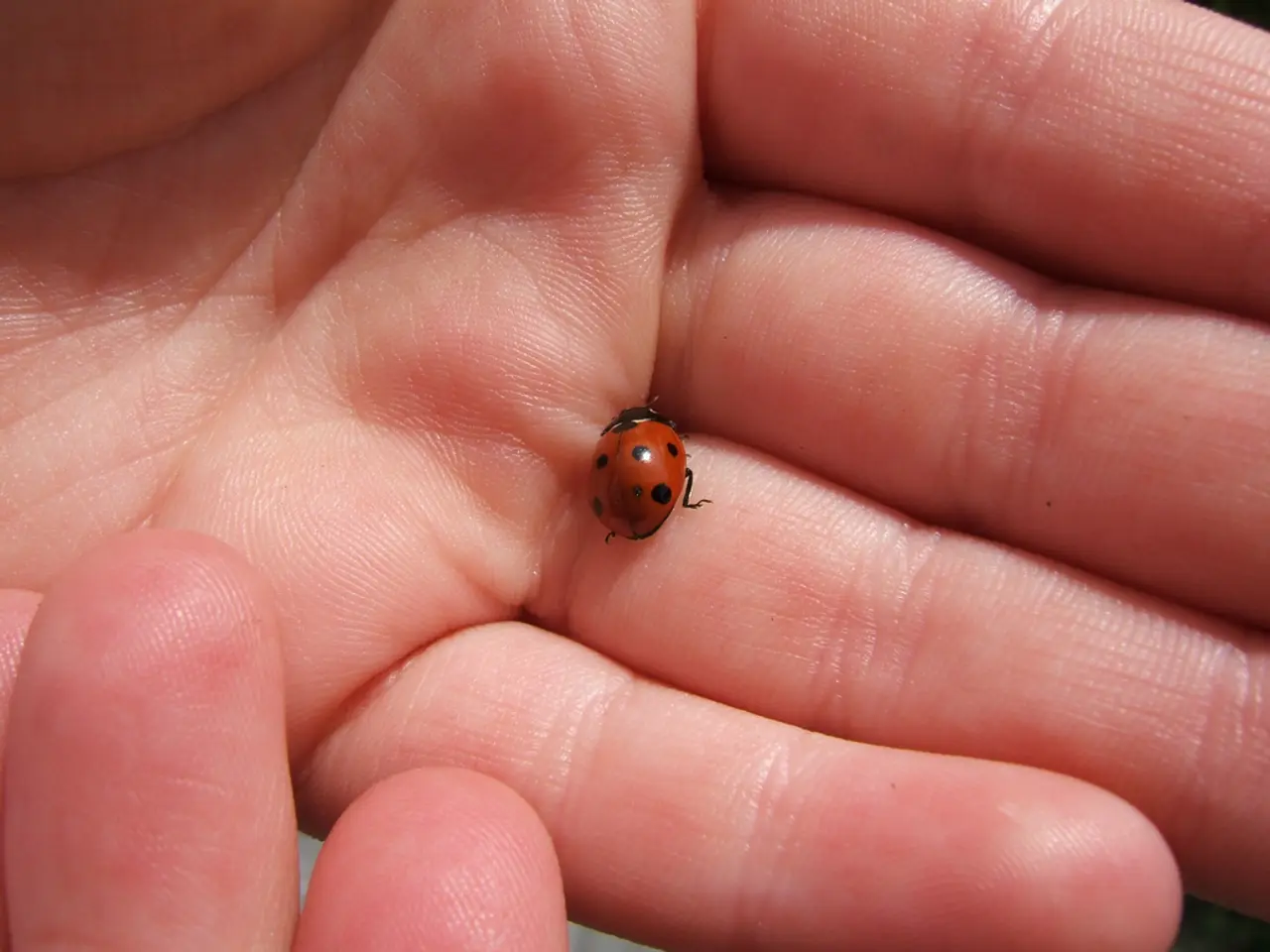Compulsive Skin, Lip, or Finger Biting: Understanding the Cause
Dermatophagia is a psychological condition that causes a person to compulsively bite, chew, gnaw, or eat their own skin, most commonly around the fingers [1]. This body-focused repetitive behavior (BFRB) is related to obsessive-compulsive spectrum disorders and is often subconscious or compulsive in nature [2][5].
The root causes of dermatophagia are connected to underlying mental health issues such as anxiety, stress, or obsessive-compulsive tendencies. It can serve as a coping mechanism to relieve nervous energy or emotional distress, but it often leads to skin damage, infections, and scarring [1][3].
Emotional pain can also drive dermatophagia. Biting fingers, lips, and other parts of the skin may be a way to alleviate negative feelings or seek pleasure to distract from emotional pain. Anxiety can trigger dermatophagia, as the appearance of lip-biting or finger-biting behavior may be a response to general anxiety disorder or nervousness [4].
The emotional symptoms of dermatophagia include feelings of shame, guilt, increased anxiety, distress, isolation, and embarrassment [3]. These feelings can lead to a vicious cycle, as the emotional distress often exacerbates the compulsive behavior.
Treatment approaches for dermatophagia typically involve behavioral strategies and mental health interventions. Habit reversal training, cognitive-behavioral therapy (CBT), and managing anxiety or stress through therapy can reduce the compulsive urges [2][5]. Awareness techniques to identify triggers and practicing alternative behaviors (like using stress balls) are also recommended.
In some cases, consulting mental health professionals for evaluation and treatment of related disorders can be beneficial. In extreme cases, medications like selective serotonin reuptake inhibitors (SSRIs) may be prescribed to address underlying anxiety or obsessive-compulsive tendencies [5].
To combat dermatophagia, it is recommended to replace the habit with healthier activities like squeezing a stress ball or chewing sugar-free gum. Additionally, skin protection measures such as wearing gloves, bandages, or bitter-tasting nail polish can act as a physical barrier to prevent biting [6].
Seeking professional help is crucial for managing dermatophagia. Cognitive-behavioral therapy (CBT) is a highly effective treatment for dermatophagia, helping individuals understand the underlying causes and develop healthier coping mechanisms [7]. With the right approach, it is possible to break free from the cycle of dermatophagia and lead a healthier, happier life.
- The root causes of dermatophagia are often related to underlying mental health issues, such as anxiety, stress, or obsessive-compulsive tendencies.
- Emotional pain can drive dermatophagia, with biting fingers or other parts of the skin potentially serving as a way to alleviate negative feelings or seek pleasure.
- Treatment approaches for dermatophagia often involve behavioral strategies and mental health interventions, such as habit reversal training, cognitive-behavioral therapy (CBT), and managing anxiety or stress through therapy.
- Seeking professional help is crucial for managing dermatophagia, with cognitive-behavioral therapy (CBT) being a highly effective treatment for understanding the underlying causes and developing healthier coping mechanisms.
- To combat dermatophagia, it is recommended to replace the habit with healthier activities like squeezing a stress ball or chewing sugar-free gum, and to use skin protection measures like gloves or bitter-tasting nail polish as a physical barrier to prevent biting.




